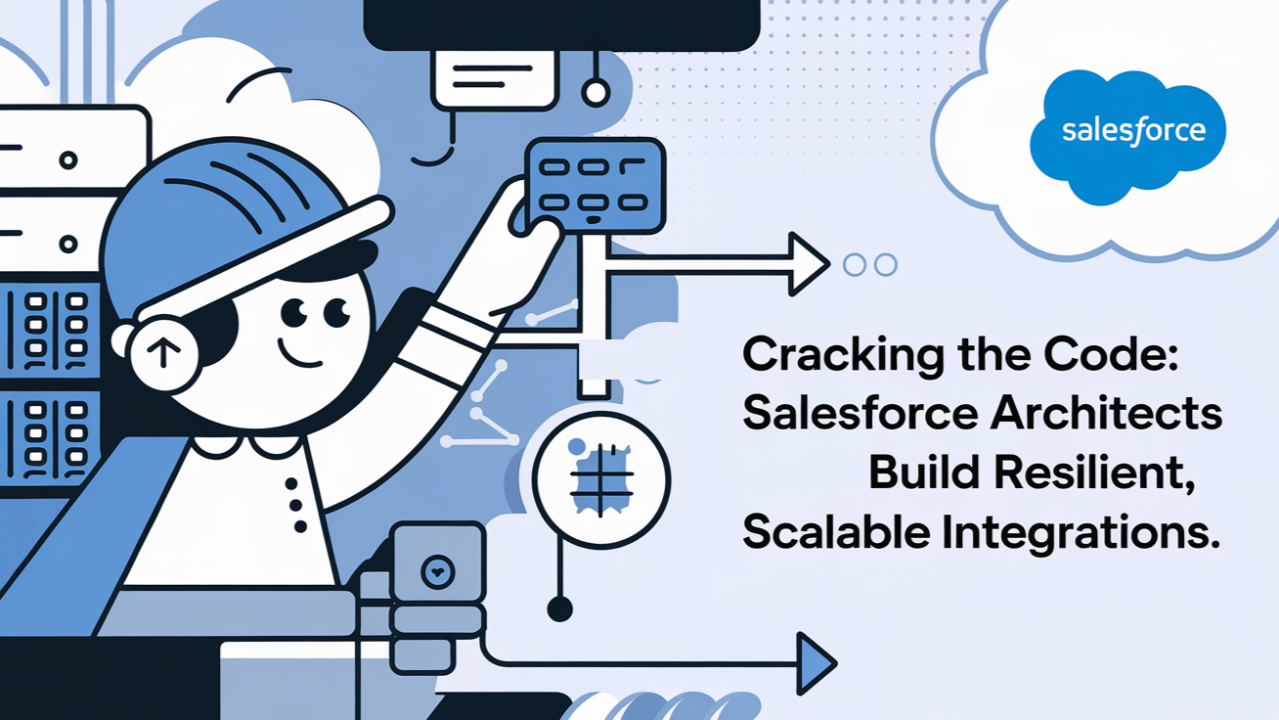
Cracking the Code: How Salesforce Architects Build Resilient, Scalable Integrations
Shrikant Bagal ???
17x Salesforce Certified Architect | Expert in Integration & Automation | Award-Winning Innovator Driving Business Transformation
As a Salesforce Architect, you’ve likely faced the challenge of keeping your org running smoothly while juggling integrations with multiple external systems. It’s a balancing act, right? Whether it’s real-time data exchanges or managing bulk data, the stakes are high, and getting it right is key to your system’s success.
Throughout this article, I’m sharing my own experience in architecting Salesforce integrations to help you build more resilient and scalable systems. Plus, I’d love to hear your thoughts—what’s worked for you when it comes to Salesforce integrations?
Key Salesforce Integration Patterns
Remote Process Invocation: Request & Reply (Synchronous)
From my experience, this pattern is crucial when real-time communication with external systems is needed. Salesforce waits for a response before moving forward, but managing timeouts and handling errors has been one of the trickiest aspects for me. Have you encountered these challenges too? What strategies have you found to manage real-time integrations smoothly?
Remote Process Invocation: Fire & Forget (Asynchronous)
Sometimes waiting for a response just isn’t feasible. I’ve found the asynchronous pattern helpful when Salesforce needs to send data and move on. The key for me has been ensuring nothing gets lost in the process—building tracking mechanisms for data verification. How do you ensure your data doesn’t get lost when using this approach?
Batch Data Synchronization
When dealing with large volumes of data, I rely on batch processing to sync records in bulk. But ensuring data consistency and avoiding duplication can be a challenge. In my experience, tools like Bulk API have been helpful, but they need careful configuration. How do you approach batch data syncs in your architecture? Any tips you’ve found particularly effective?
领英推荐
Event-Driven Integration
I’ve seen event-driven architectures transform how we handle real-time integrations. When key events—like a new customer order—trigger platform events, it allows other systems to respond instantly. This pattern has worked well for me, but I’m curious—how have you implemented event-driven approaches in your Salesforce integrations?
Building Scalable, Resilient Integrations
To ensure your Salesforce integrations are built to last, here are a few principles I’ve relied on over the years:
Why It Matters
From my experience, choosing the right integration patterns isn’t just about solving immediate technical challenges—it’s about setting up your architecture for long-term success. Here’s why these patterns are essential:
Based on my experience, I’ll be diving deeper into each of these integration patterns in future articles to explore their nuances and best practices in greater detail. Stay tuned for more insights on how to master these techniques!
So, based on my experiences, what’s been your approach to Salesforce integrations? Have you used any of these patterns, and how have they worked for you? I’d love to hear about the unique strategies you’ve employed to keep your Salesforce ecosystem resilient and scalable. Let’s start a conversation!
#SalesforceArchitect #SalesforceIntegration #DataArchitecture #CloudIntegration #APIDesign #RealTimeData #ScalableSolutions #EventDrivenArchitecture #SalesforceBestPractices #TechLeadership